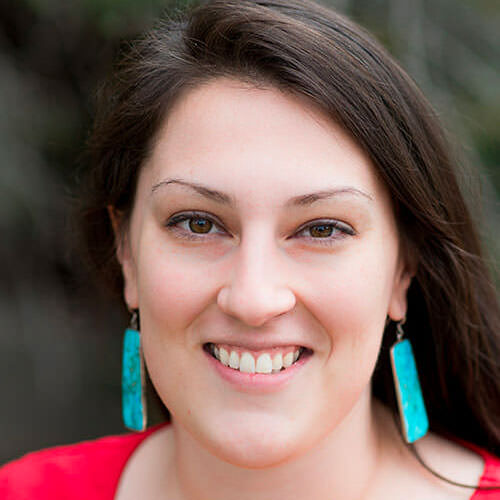
For many private institutions, community college transfer students represent a viable and untapped opportunity for increased enrollment and tuition revenue. While developing a webcast to share practical strategies for partnering with community colleges to improve student recruitment and student success, I had the opportunity to talk with Mary Hinton, president of the College of Saint Benedict. Hinton, who also authored our recent article “Game On for the Liberal Arts” and participated in the Presidential Dialogues, has a forward-thinking approach and makes an eloquent and compelling case for partnering with two-year institutions – not only to boost enrollment objectives, but to address a growing need in society.
Partnering for Better Transfer Pathways: An Interview with Mary Hinton
Sarah Seigle. As private colleges look to recruit more transfer students, how would you describe the opportunity you see for four-year private institutions when it comes to partnering more strategically with community colleges?
Mary Hinton. As we think about student demographics, and the desire for our institutions to be more inclusive, we know part of that equation will demand thinking beyond our current constituents. Partnering with two-year institutions provides viable opportunities to reach more students; to genuinely exhibit inclusion; and to recognize that for some, access to a liberal arts institution may mean completing a portion of their education elsewhere. While the financial and enrollment incentives are real for four-year institutions, I also think there is a critically important inclusion imperative that we need to acknowledge and work towards.
Sarah Seigle. Why does this present more of an opportunity now than in the past? What has shifted in the characteristics of community college students (regarding academic preparation, demographics, ability to pay, etc.)?
Mary Hinton. The financial pressure on families is real and unprecedented. For some, the only way to make a college education feasible is to begin with a two-year institution. Four year colleges have to acknowledge that our economic model contributes to this challenge for families. One solution is to partner with two-year institutions. This also means shifting our thinking from a position of two year colleges as a statement about academic ability to recognizing that, today, it is quite often a statement about economic ability to pay. We have to be certain to not conflate academic ability with economic ability to pay.
There is also the inclusion imperative we have to address. We know that low-income, first generation and students of color are far more likely to enroll in two-year institutions and to believe that a liberal arts education is beyond their reach. If we want to change that; if we want to make our institutions more inclusive; if we want to bring the value and outcomes of a liberal arts education to all, then I think it is imperative that we find ways to partner with two-year institutions.
Sarah Seigle. If private institutions do begin to enroll more transfers, what internal support structures and processes might they need to think about putting in place or adjusting to better meet the needs of transfer students? (Some examples might be: Streamlined credit evaluation processes, admissions counselor positions that are specifically dedicated to transfers, orientation programs, tailored advising, etc.)
Mary Hinton. It will be incredibly important for institutions to truly value transfer students and to provide them with the same level, quality and intentionality of service that all students receive. Institutions have to be prepared to not treat transfer students as ancillary. There need to permanent, sustainable structures in place to ensure the success of students. The needs may be different so issues like ease of process and transparency of process may take on heightened meaning. In addition, we have to ensure we are as attentive to creating a pathway of success for transfer students that is equal to the pathways we have in place for four year students. I don’t think we can compromise or shortchange that process. Each institution has to think through these items and address them in keeping with their mission and organizational strengths. We need to ensure that our institutions are able to make those commitments and put the processes in place proactively so that students feel welcomed, appreciated and included from the beginning.
Sarah Seigle. Mary, what are the top 2-3 things that you foresee as being most challenging for private institutions as they ramp up their efforts to create more intentional pathways for community college students?
Mary Hinton. As we begin the process of discerning how we would like to engage with two-year college transfers, I think we have to be honest about our motivations, our strengths and challenges.
First, I think we need to begin the conversation about these partnerships from a perspective of student outcomes and mission alignment, not just from the perspective of revenue generation. Meaning, we should create partnerships when we can see a benefit to the students we serve, now and in the future. We should invest because we believe our mission offers value to the students, not just because we think it makes for a healthier bottom line.
Also, we cannot presume that what has made us successful in the past will make us successful in the future with a new group of students, so we have to be fully prepared to create new systems which may challenge the way we think of ourselves.
Third, we have to be prepared to make an investment in structures and people to ensure the success of all of our students. Institutions have to ask themselves if they are willing to make that investment.
Sarah Seigle. What is one piece of advice you would offer to administrators at other private, four-year institutions who are trying to make the case for strengthened community college transfer partnerships and pathways on their campuses?
Mary Hinton. I think it is important that you do your homework, internally and externally, and be very clear about your motivations and capacity before doing this work. For many of us, we may be extending the vision of our institutions and we need to be very clear about why we are doing it and how it benefits our prospective students, our mission, and our institution to do so. If we cannot make a case for benefit in each of those areas then we may need to rethink what we are doing. Finally, four-year college leaders will have to assess their, and their institution’s, readiness to view two-year colleges as partners to our institutions, as opposed to merely a pipeline. If we view one another as partners, we can think creatively about how we work together proactively as opposed to passively shepherding students between institutions. Leaders will need to assess their readiness for being a partner with other college leaders.
Assess Your Readiness for Partnering with Community Colleges
Included with our recorded webcast on this topic, you will receive a self-audit questionnaire, a detailed worksheet, and a handful of readings and resources in hand to help further conversations about the development of transfer pathway programs on your campus.


